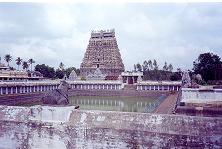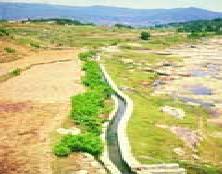Tanks
Most houses in Bikaner have an underground tank (Tankas) which were used to store water. They were circular holes made in the ground, lined with fine polished lime, in which rain water was collected. It took care of their annual needs.
One tank, one temple and a grazing land for cattle of a village” was the concept of our ancestors which would support sustainable growth of villages2. Water tanks served the purposes like flood control, prevention of soil erosion, reducing wastage of run-off and recharging groundwater. The management of tanks was given to individuals or to village communities or to temples. Entire tank system was suitable for direct irrigation for agriculture and easy for decentralized water management. These tanks were constructed using stone, cement or mud or a combination of these. Tanks / Eris are one of the oldest in irrigation engineering designs in our country.
The temples in south India have huge tanks as part of the temple premises. Some of them have more than one tank. Besides serving the needs of the temple and use of water by devotees for purifying before darshan these tanks increased ground water levels. Picture number 9 shows a water tank in the Chidambaram Temple, Tamil Nadu. To conserve rainwater, the Chola kings built a network of tanks in Tamil Nadu. Most of these were used for irrigation purposes.

Pic.-9
Kuhl - Himachal Pradesh
Kuls are water channels found in precipitous mountain areas. These channels carry water from glaciers to villages in the Spiti valley of Himachal Pradesh. Where the terrain is muddy, the kul is lined with rocks to keep it from becoming clogged. In the Jammu region too, similar irrigation systems called kuhls are found.
In Assam ancient kings constructed big ponds to preserve rainwater. In some places, the Garh is used to channelize river water to the agricultural field. A Garh is like a big nala, where both sides have big and long embankment and the middle side is left open for water to flow.
Thus it is evident that many communities in India in the past and present have effectively employed water harvesting to meet their water needs.Eco sustainable policy of our villages was based on the concept of land-water-vegetation. Surplus (food, fodder, etc) generated at the village level supported the towns and cities. Large part of the village prosperity came from the water harvesting system, which gave them an assured supply of water for irrigation.

Pic 10